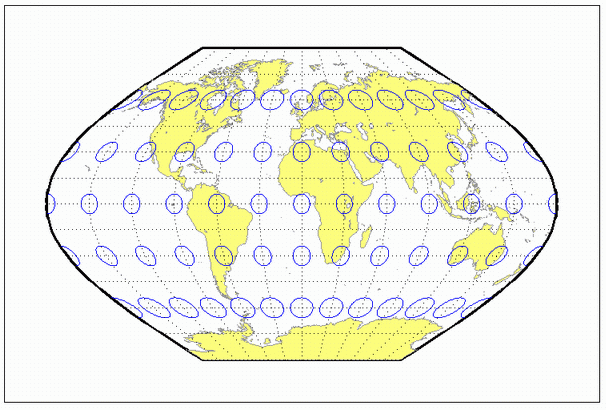winkel
Winkel I Projection
Classification
Pseudocylindrical
Identifier
winkel
Graticule
Central Meridian: Straight line at least half as long as the Equator.
Other Meridians: Equally spaced sinusoidal curves concave toward the central meridian.
Parallels: Equally spaced straight parallel lines, perpendicular to the central meridian.
Poles: Lines at least half as long as the Equator.
Symmetry: About the central meridian or the Equator.
Features
This projection is an arithmetical average of the x and y coordinates of the Sinusoidal and Equidistant Cylindrical projections. Scale is true along the standard parallels and is constant along any parallel and between any pair of parallels equidistant from the Equator. There is no point free of distortion. This projection is not equal-area, conformal, or equidistant.
Parallels
For this projection, only one standard parallel is specified. The other standard parallel is the same latitude with the opposite sign. Any latitude may be chosen; the default is set to 50º28'.
Remarks
This projection was developed by Oswald Winkel in 1914. Its limiting form is the Eckert V when a standard parallel of 0º is chosen.
This implementation of the Winkel I projection is applicable only for coordinates that are referenced to a sphere. If you want to project coordinates that are referenced to an ellipsoid, using the
projfwdorprojinvfunctions, then create aprojcrsobject instead of a map projection structure. You can create aprojcrsobject for the Winkel I projection using the ESRI authority code 54018. For example:projcrs(54018,'Authority','ESRI').
Example
landareas = shaperead('landareas.shp','UseGeoCoords',true);
axesm ('winkel', 'Frame', 'on', 'Grid', 'on');
geoshow(landareas,'FaceColor',[1 1 .5],'EdgeColor',[.6 .6 .6]);
tissot;
Version History
Introduced before R2006a